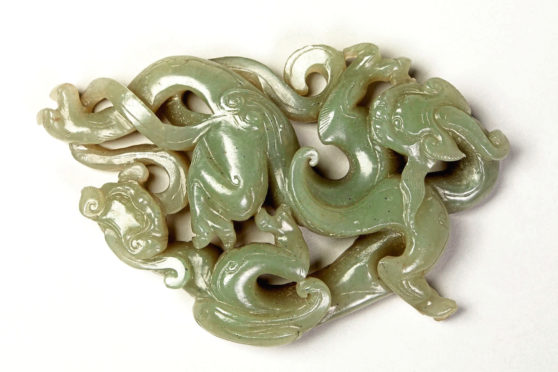Born in Aberdeen, James Cromar Watt (1862-1940) was an architect, enamellist and jeweller who amassed a vast collection of decorative art from overseas, including Chinese lacquerware, metalwork, ceramics, carvings and textiles.
After his death, many of these objects were bequeathed to Aberdeen City Council, including the Chinese jades featured in this article.
Jade is highly prized in Chinese culture and jade carvings have been made in China since ancient times, with Neolithic jades dating to about 4000-2000 BC.
The jade used to make Chinese carvings is called nephrite which is a crystalline calcium magnesium silicate. Jade is white in its purest form but impurities like iron compounds produce other colours including green, brown, grey and black.
A lapidary is an artist who specialises in cutting, polishing or engraving gemstones.
Jade clothing pendant, Ming Dynasty, Wanli Period 1573-1619
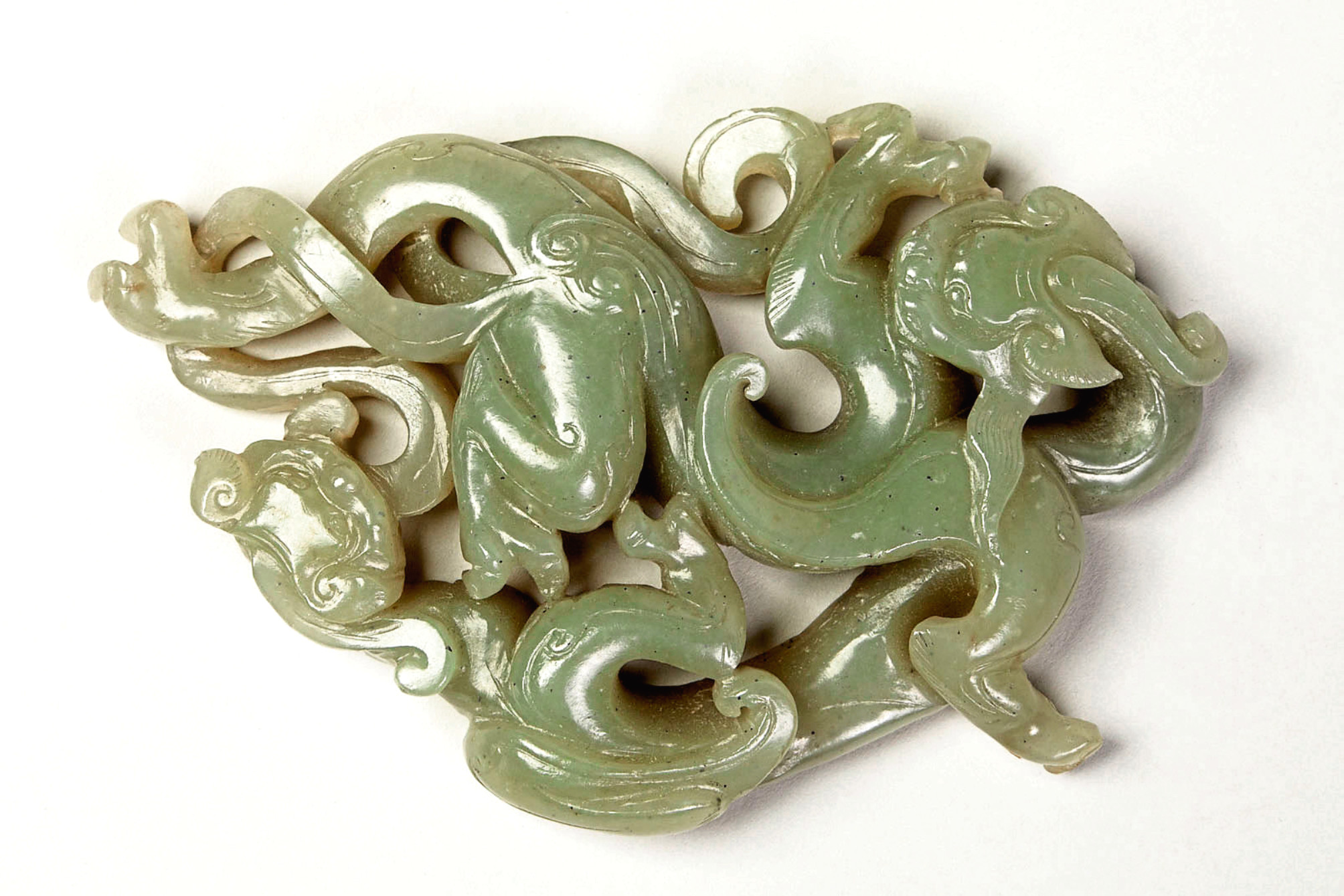
This Chinese green jade clothing pendant has been intricately carved by a highly-skilled lapidary.
Mutton-fat jade brush pot, Qing Dynasty, 18th Century
Mutton-fat jade is white and this mutton-fat jade brush pot is in the form of a lotus flower and leaf. The lotus flower is associated with Buddhism and is a symbol of feminine beauty as well as purity.
Spinach-green jade ink pot, Qing Dynasty, 18th Century
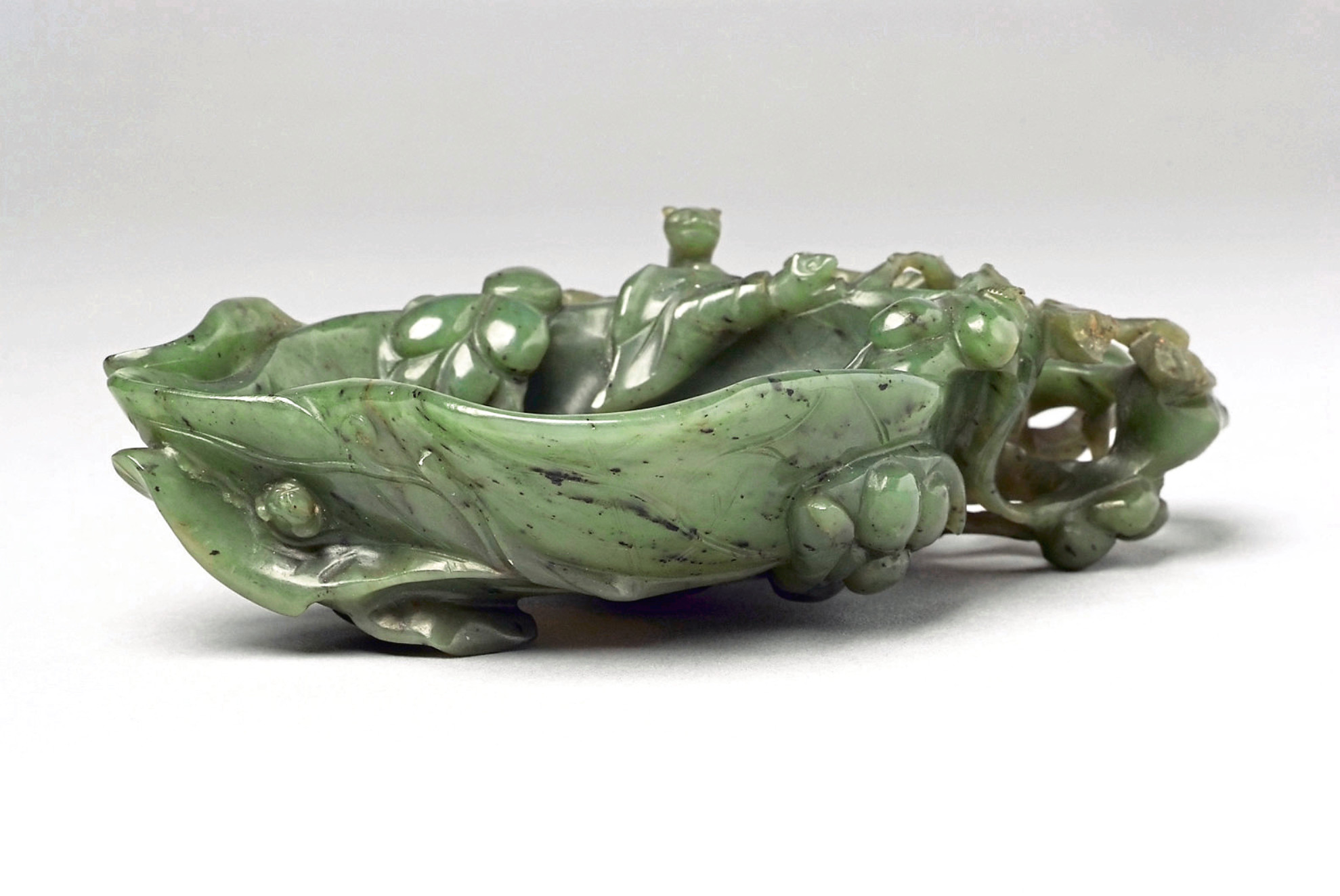
Dark green jade is called spinach-green. This spinach-green jade ink pot is in the shape of a leaf.
Ruyi with jade suspension, Qing Dynasty, 18th-19th Century
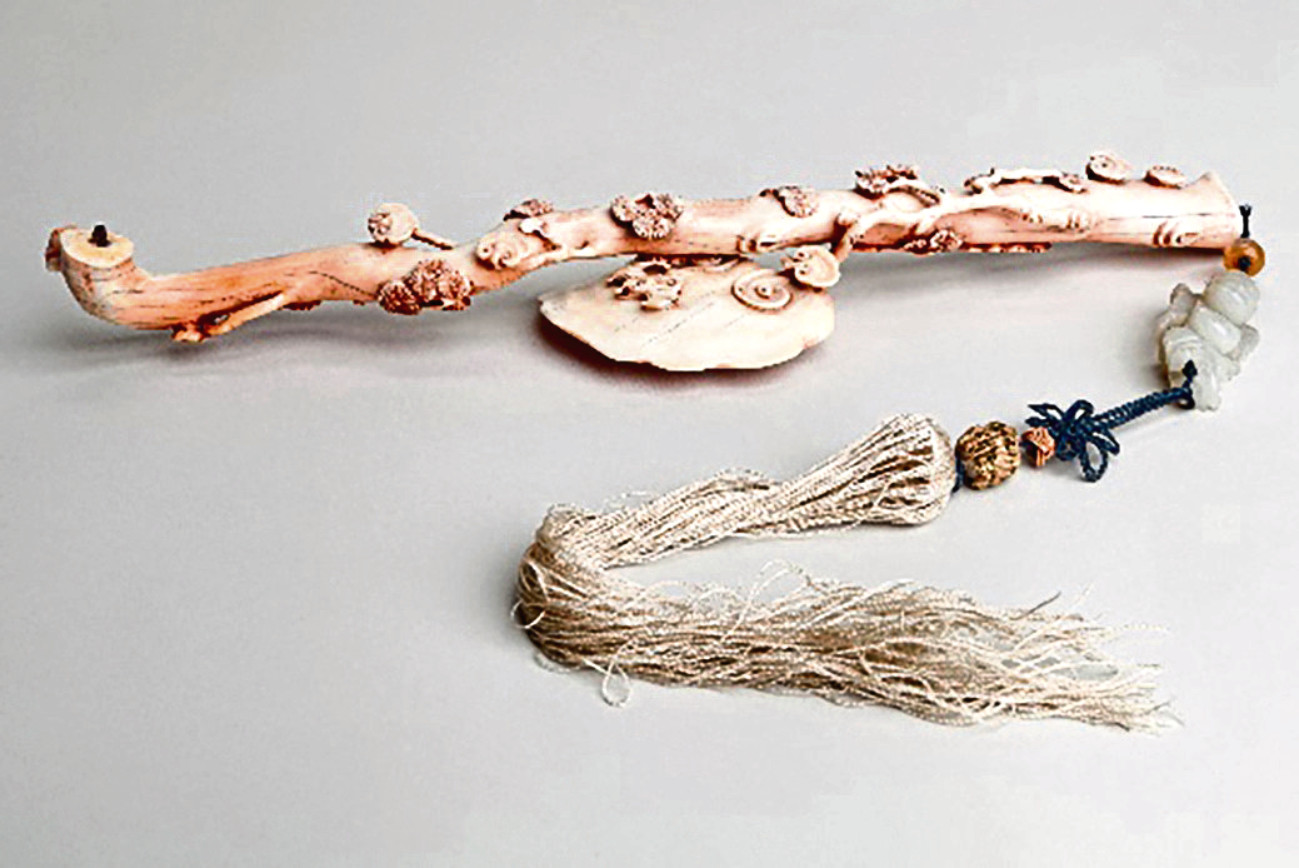
Ruyi means “as you wish” and a ruyi is a curved decorative object that is a token of good fortune. This carved Chinese ivory and coral ruyi is in the shape of a branch decorated with foliage and a bat. In Chinese culture the bat is a symbol of happiness. There is a carved jade figure suspended from the ruyi.
Incense burner, Qing Dynasty, Guangxu Period, 1875-1908
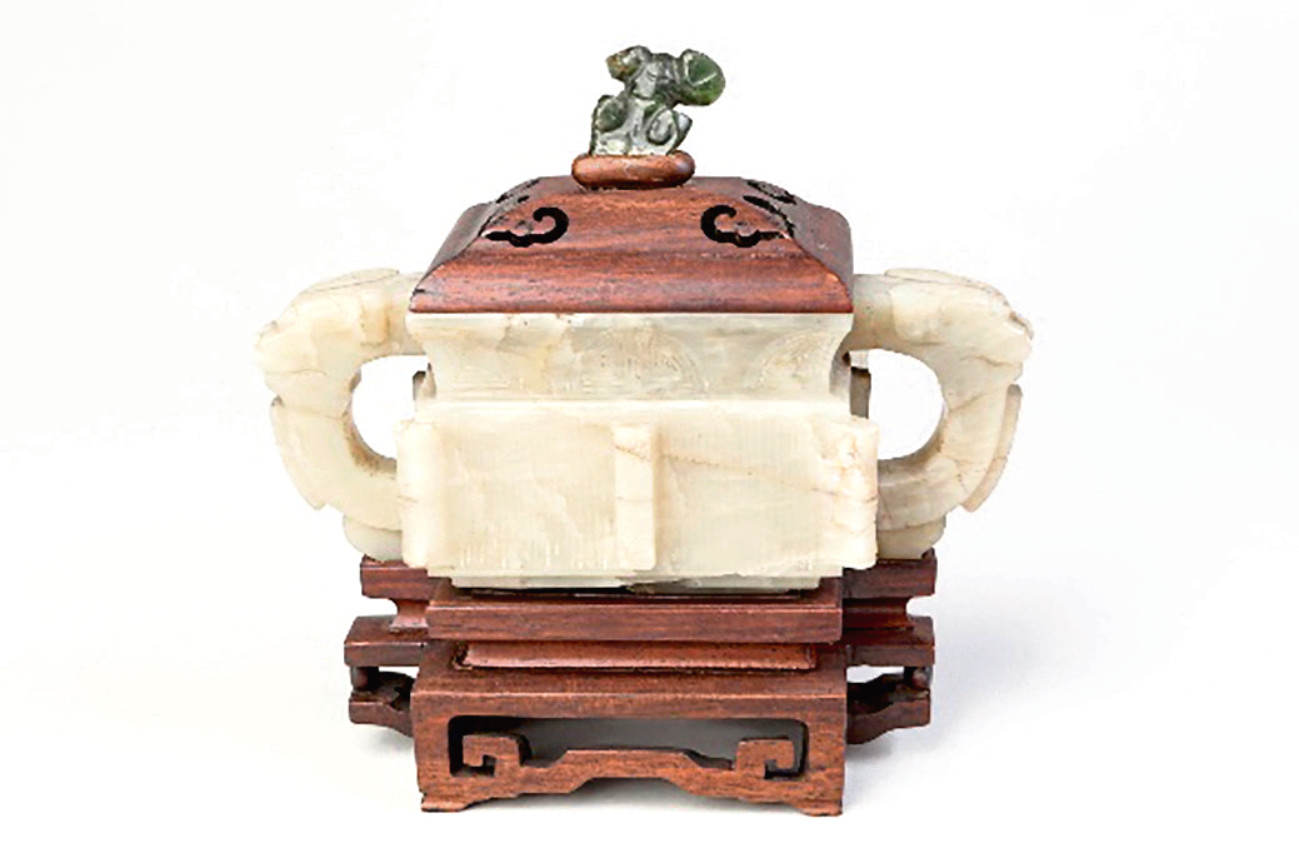
Burning incense produces a pleasant scent.
This Chinese incense burner has a mutton-fat jade body. The handles are in the shape of animals and there is a spinach-green jade carved animal on top of the lid.
Chinese jades are fascinating due to the variety of intricate decorative designs created by the highly-skilled craftsmen who made them.
See beautiful examples of enamelled jewellery by James Cromar Watt and items from his collections at Aberdeen Art Gallery.
